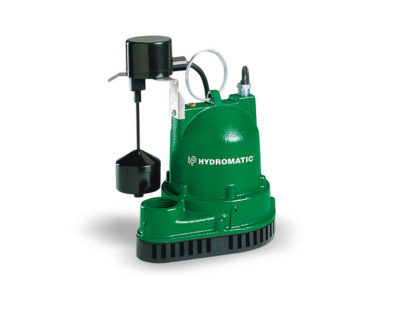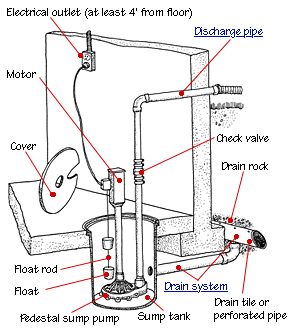Sump Pump Shopping 101

When it comes to your home, quality investments are critical to saving money long term. Your home is your sanctuary, your recluse; the place where you let your hair down and spend time with your loved ones, or simply unwind from a long, hard day. It’s when corners are cut that your home becomes a headache (barring unforeseen events and natural disasters). One such corner that tends to be cut, is a failsafe that not too many people really notice unless it fails: their sump pump. Be it from heavy rains, a sewage backup, or a waterline leaking; your basement is at risk of flooding, and even though you may have taken precautions to minimize that risk, a reliable failsafe is always recommended. This is where sump pumps come into play; little machines that pump excess water that would normally pool in your basement, safely outside and away from your home. Sump pumps, however, are not built equally; as there are a couple of different types of pumps, all varying in material used. So how do you choose a quality sump pump? Continue reading and we’ll reveal the world of sump pumps to you.

As we mentioned before, not all sump pumps are built equally; so in order to find the best sump pump for you, you need to look at what you need. For example, if you live in an area that experiences power outages fairly frequently, you may want to invest in a battery-operated backup sump pump. If you live in an area with a high flooding risk, probably due to a proximity to a body of water, you’ll want to invest in a ‘hardier’ pump. Don’t worry, we’ll lay the cards on the table to help you make an informed decision. First up, you need to look at the different kinds of sump pumps that are currently available on the market. You have 2 main types of sump pump: submersible and pedestal. A submersible pump (as the name suggests) sits in within the reservoir in your basement, whereas a pedestal pump stands outside of the well. Which you choose will depend on the size of the reservoir beneath your basement, and the amount of water you may potentially need to pump out.

The submersible pump, while it offers more horsepower and is out of sight thanks to being submerged, also had its cons; being that it may not have the same lifespan as a pedestal pump, and when it kicks the bucket, you will need to rip up your basement floor to access it. This can be avoided if you purchase a pump made from a high quality material such as cast iron, as such materials have a much longer lifespan. You can also purchase a relatively cheaper cast iron pedestal pump, which offers a longer lifespan, however; it can prove to be noisy and in the way as it isn’t hidden, and doesn’t offer nearly as much horsepower. We recommend looking at how much potential water you may need to pump out, and how fast you may need to pump it before deciding on which of these two styles you’re going to purchase.
The style of the sump pump isn’t the only factor that comes into play when looking for a quality sump pump; you also need to look at the material the pump itself is made of. There are a handful of materials used when building a sump pump, all of which offer their own pro’s and con’s; however we generally recommend cast iron sump pumps. They’re durable, offer a long lifespan and are more reliable than a sump pump with plastic parts. The plastic sump pump, while easier on the wallet, is more prone to wear, tear, and damage. Cast iron, on the other hand, can take a beating and continue to function; which is particularly important as small debris occasionally makes its way into your reservoir.
One last thing you’ll want to consider before purchasing a sump pump, is the kind of switch it utilizes. There are three kinds switches to turn on your sump pump: electronic, float and diaphragm. Electronic switches rely on sensors, which lowers the worry of physical parts failing to notice that the water is at a dangerous level; on the flip side, however, this also means that if the power goes out (unless it’s battery operated) your sump pump won’t turn on. With a float switch, your sump pump is turned on when the water pushes the floating mechanism to a certain point. This particular switch is at a higher risk of wear and tear, as it moves based on the water level, but can be easily fixed; more so if attached to a pedestal pump. Last but not least, we have the diaphragm switch, which is activated by water pressure. Some variations of the diaphragm switch are adjustable, while others are not, so this switch doesn’t offer as much reliability than the other two switches, in our opinion.
With so many different options and variations, shopping for a quality sump pump can be overwhelming. To sum everything up, the things you need to keep in mind are: style, material, horsepower and trigger type. See which of the options suit your needs, and then compare them, being sure to take your time (if you can). Your sump pump is the failsafe between your home and water damage, that ‘just in case’ backup; or maybe even a necessity due to where your property is. For now, however, we’ll let you mull over the information we’ve thrown at you for now. Should you have any further questions, please don’t hesitate to contact us! In the meantime, we wish you happy shopping and a dry basement.
